The calculator allows you to store as many as 400 keystrokes and execute them with one click. Among its ~130 functions, you'll find brilliant statistical features, including correlation coefficient calculations, cumulative analysis tools, and more.
The pads on the bottom are not the same height.
The HP 12C Platinum builds upon its predecessor's legacy and improves what already was an excellent financial calculator that many industries were relying upon. Aside from the previous model's features, this one can also tackle both RPN and algebraic entry and has four times its memory.
Real Estate, Banking, Finance, Business Studies, Accounting
Efficient RPN data entry, TVM (loans, savings, and leasing), Amortization, Bond price and yield to maturity, Cash flow analysis, NPV, IRR, Memory for up to 20 cash flows, SL, DB, SOYD depreciation methods, % change, % of total
LCD screen (1 line x 10 characters)
1 x "CR2032" battery (up to 2 years battery life)
Keystroke programming (up to 400 steps), Auto power off, Power off memory protection, Protective pouch included
5.1" x 3.1" x 0.6"
4.1 oz
1 year
The screen is fragile (every little bump causes imprints on the display).
From people working in finance to accountants, economics professors, investment bankers, and statistics whizzes, the Texas Instruments BA II Plus will be able to accommodate them all, increasing productivity and streamlining various calculations.
Finance, Accounting, Economics, Investment, Statistics
IRR, MIRR, NPV and NFV for cash flow analysis, Time-value-of-money and amortization, Depreciation schedules, Interest rate conversions, One- and two-variable statistics
LCD screen (1 line x 10 characters)
1 x "CR2032" battery (up to 2 years battery life)
APD™ (Automatic Power Down) feature, 10 user memories
3.2" x 6.1" x 0.6"
6.1 oz
1 year
The batteries do not last.
The HP 10bII+ Financial Calculator will meet and match varying needs, from economics and business professors to students figuring out pre-algebra equations. Taking the product's affordable price into account, this is an easy yet wise investment.
Accounting, Banking, Business Studies, Finance, General Math, Real Estate, Science, Statistics, Pre-Algebra/Algebra
TVM (loans, savings, leasing), Amortization, Cash flow analysis (IRR, NPV, NFV), Depreciation (SL, SOYD, DB), Bonds, Interest conversion, Margin/cost of sales, Break-even analysis, Date calculations
LCD screen (1 line x 12 characters)
1 x "CR2032" battery (up to 1 year battery life)
Auto power off, Power off memory protection
3.2" x 5.7" x 0.6"
3 oz
1 year
The buttons are not great and do not always register the clicks.
The Texas Instruments IIBAPL can handle common math equations and hardcore worksheets with matching ease. You can switch between its standard and worksheet modes to go from performing cash flow analysis to calculating advanced list-based statistics.
Accounting, Economics, Finance, Marketing, Mathematics, Real Estate, Science, Statistics
IRR and NPV for cash flow analysis, Time-value-of-money function, Depreciation schedules, Interest rate conversions
LCD screen (1 line x 10 characters)
1 x "CR2032" battery (up to 2 years battery life)
APD™ (Automatic Power Down) feature, 10 user memories, Protective cover included
3" x 6.5" x 0.7"
3.8 oz
1 year
In addition to one LR44 battery, the calculator draws power from a solar cell, allowing you to use the device for up to 3 years without replacing the battery. The direct mode keys give you quick and easy access to the main functions.
The parameters for compound interest rated are too complicated.
The Casio FC-200V is the sleekest, most productive device within this selection. With its 4-line screen, the model allows for easy input, confirmation, as well as change and correction of each parameter. Plus, the joystick enables easy menu navigation.
Finance, Accounting, Economics, Investment, Statistics
IRR and NPV for cash flow analysis, Calculations: Simple interest, Compound interest, Cash flow, Amortization, Interest rate conversation, Cost, Selling price, Margin, Depreciation, Purchase Price and annual yield, Break-even point
LCD screen (4 line x 14 characters)
1 x "LR44" battery (up to 3 years battery life), Solar cell
Auto power off, Side-on hard case
3.1" x 6.3" x 0.5"
3.7 oz
3 years
This site is a free online resource that strives to offer helpful content and comparison features to its visitors. Please be advised that the operator of this site accepts advertising compensation from certain companies that appear on the site, and such compensation impacts the location and order in which the companies (and/or their products) are presented, and in some cases may also impact the scoring that is assigned to them. The scoring that appears on this site is determined by the site operator in its sole discretion, and should NOT be relied upon for accuracy purposes. In fact, Company/product listings on this page DO NOT imply endorsement by the site operator. Except as expressly set forth in our Terms of Use, all representations and warranties regarding the information presented on this page are disclaimed. The information which appears on this site is subject to change at any time. More info
HP 12C Platinum
The Industry-Standard Updated
The HP 12C Platinum takes the industry-standard HP 12C and improves it. In addition to everything the world-renowned device was already fitted with, this model's offering both RPN and algebraic entry, not to mention extra power that allows the calculator to perform industry-specific calculations using four times more memory.
Including heavy-duty calculations pertaining to real estate, banking, and finance, the updated device adopts more than 130 functions. Its statistical features include but not limited to cumulative analysis, linear progression, correlation coefficient, standard deviation, mean, weighted mean, forecasting.
Meanwhile, the business and finance functions are offering the standard TVM package (meaning loans, savings, and leasing), amortization calculation, bond price and yield to maturity configuration, as well as registered-based cash flow analysis that includes access to the model's improved memory facilities with 30 available cash flows.
Where things get a little hairy is its construction. To be more precise, we're talking about the pads on the bottom that are not the same height, so the device rocks when used on flat surfaces.
Aside from that, the HP 12C Platinum is an excellent upgrade to an already impressive little machine that can do anything even remotely related to finances.
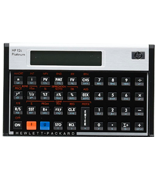
Texas Instruments BA II Plus
Advanced Business Analyst
The Texas Instruments BA II Plus earns its "professional" title and the "advanced business analyst" label you'll find below the buttons. With this device, you'll be able to make short work of the most complex equations. From entry-level to advanced finance, from investment and statistics, from accounting, economics, and different business classes, the model's application rage is practically limitless. This is what you should bring to the next Chartered Financial Analyst (CFA) exams, provided you want to ace the tests.
To go with the standard features that include amortization, accrued interest, time-value-of-money, cost-sell-margin, and depreciation calculations, the device will allow you to solve more complex business- and finance-related issues. From net future value (NFV), modified internal rate of return (MIRR), and modified duration to payback, discount payback, and more.
Setting aside what this device can do, with its rugged metal housing, firm-touch buttons, and anti-slip rubber feet, you can bring this calculator with you to any meeting without worrying about what the road might do to it.
In short, the Texas Instruments BA II Plus is the device that will allow you to connect any numbers, figuring out cost, expenses, profits, and much more.
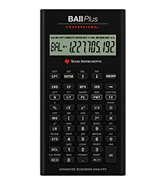
HP 10bII+
From Pros and Professors to Students
The HP 10bII+ Financial Calculator is less complicated and convoluted than its HP relative that we've reviewed above yet, as far as most business and finance needs are concerned, about as productive and efficient. The device will let you easily calculate anything from loan payments, interest rates, and conversions to standard deviation, percent, TVM, NPV, IRR, cash flows, the list goes on. Its features include amortization, depreciation (SL, SOYD, DB), cash flow analysis (IRR, NPV, NFV), break-even analysis, margins, sales costs, interest conversion, date calculations, bonds, and more.
Apart from its calculation prowess, the model only measures 3.2 x 5.7 x 0.6 inches and weighs no more than 3 ounces, so you can put this thing inside most pockets.
Considering the device's affordable price though, cutting some corners was inevitable. From where we're standing, the corner that was cut the most was its disposition towards batteries, making the device burn through one CR2032 battery within ~12 months, whereas most calculators can last ~2 years on that battery.
Even taking that into account though, the HP 10bII+ Financial Calculator is easily the most well-rounded product within this lineup, suitable for professors, students, and different professionals of all levels.
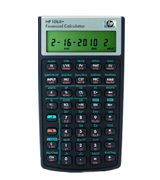
Texas Instruments IIBAPL/TBL/1L1
Common Math and Hardcore Worksheets
The Texas Instruments IIBAPL, with its massive financial worksheet collection, might take some time and effort to figure out but you'll be glad you did since this device can increase productivity and streamline efficiency unlike most financial calculators. First, you can choose between standard calculator and worksheet modes.
The first, standard mode allows you to perform common math and operations that involve the time value of money, meaning applications like mortgages and annuities where payments are equivalent and evenly spaced. This mode will also be able to tackle trigonometric functions.
Now, the worksheet mode includes more hardcore tables, such as amortization, bond, depreciation, and compound interest. Those who are not acquainted with these calculations can refer to the supplied user manual that can guide you through them.
With 10 user memories available, the device allows you to store more previous worksheet values than most calculators so that you're not forced to retype all the bond maturity and cash flow analysis figures when you need them again.
Bottom line, the Texas Instruments IIBAPL is as good at tackling basic math problems as it is at calculating hardcore worksheet tables.
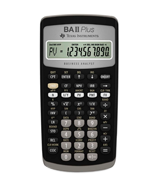
Casio FC-200V
Four Lines
The Casio FC-200V looks sleek, not what we're looking for and expecting from financial calculators first and foremost yet something that we can always appreciate. What's more important though is that the model's design offers high availability, scalability, and excellent flexibility. Before anything else, what these words hint at is the device's 4-line, 14-character screen. With 4 lines rather than 1, the screen enables easy input, confirmation, change, and correction regarding each and every parameter. We can also somewhat extend the same sentiment towards the 3-digit, comma-markers feature.
The device can handle anything that has anything to do with numbers and finances. Without even touching upon the standard functions lineup, the model allows you to calculate the depreciation amount using the straight-line method, declining balance method, fixed percentage method, or sum-of-the-year's digits method. You'll be able to calculate sales and leverage within the break-even point. Plus, using two shortcut keys, the device can memorize and store different values and settings that were used before to recall them with one push of shortcut key.
To sum up (pun somewhat intended), with its powerful yet original financial functions, the Casio FC-200V takes the brunt of the work related to financial calculations.
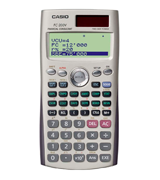
What Is a Financial Calculator?
As good as smartphones, tablets, and different computers are these days, financial calculators are still more convenient, comfortable, and fast compared to these much more powerful machines. Using these devices, you can calculate anything from amortization and cash flow analysis to bonds, depreciation values, interest conversion, TVM, RPN data entry, the list does not end there. With these practically endless financial features, the calculators we're discussing prove useful in many fields, including but not limited to MBA and accounting students, real estate, investment, statistics, banking, marketing, anything related to finances and also academia (though these accounting tools are no joke too).
Aside from the features and application range, the right calculators should have a comfortable key layout, come equipped with some memory capacity, and have the right screen (size- and font-wise) to make these numerous values readable and accessible. Features that automatically turn the device off after ~5 minutes of idle time and side-on cases that protect the screen during transportation are always welcome too.
With graphing calculators, you can visualize complex concepts and create graphs, so as far as scientific and other certain fields are concerned, these are more beneficial.


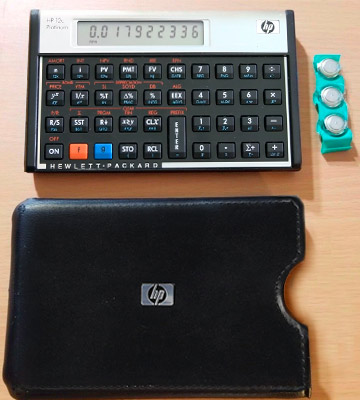
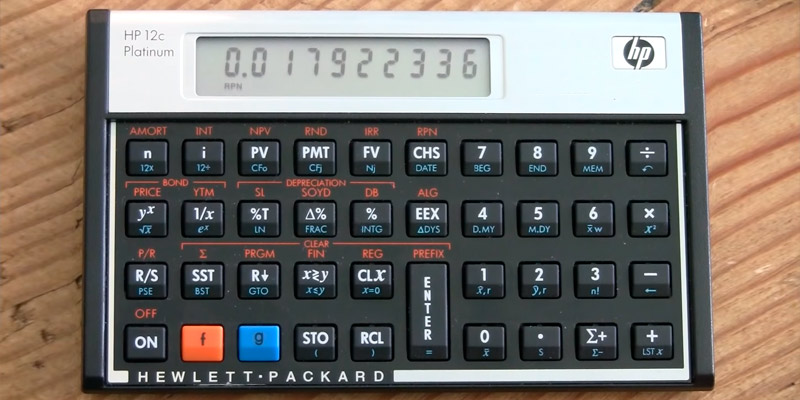
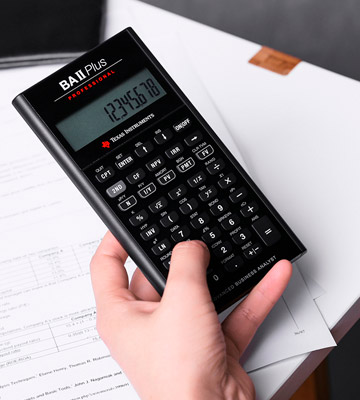
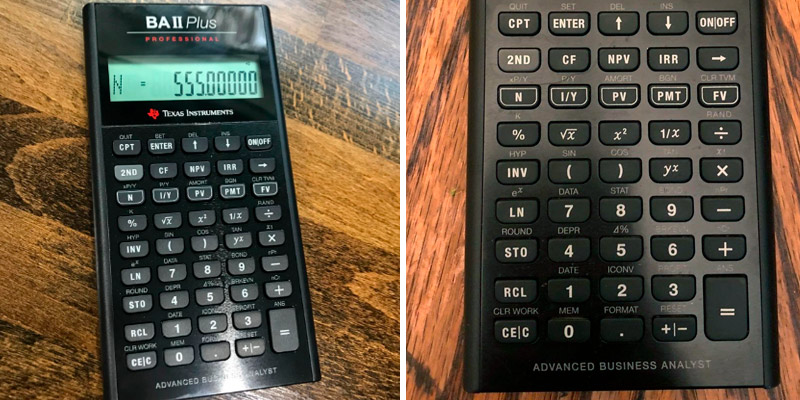
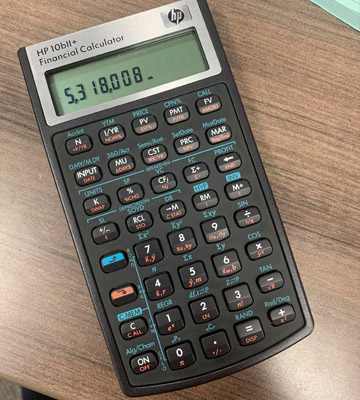
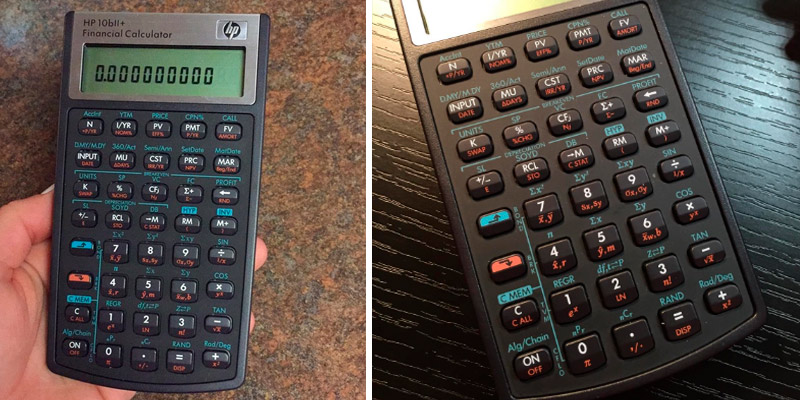
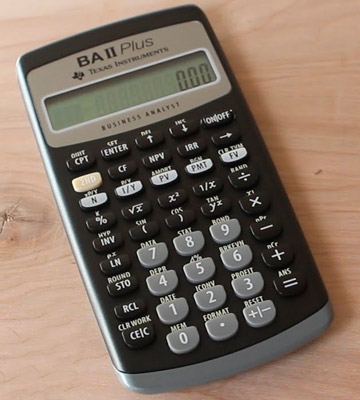
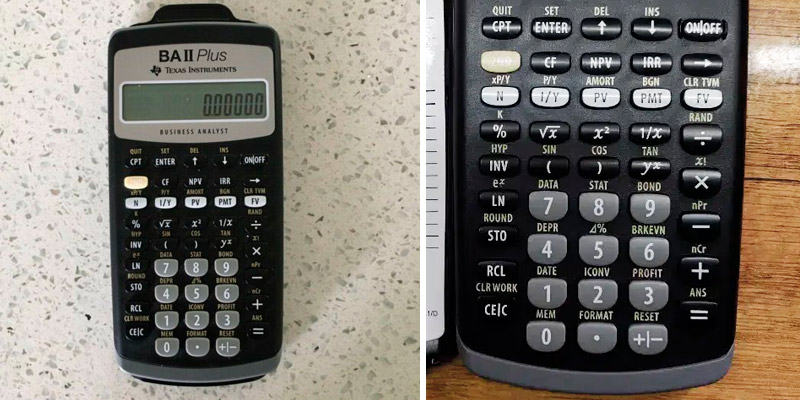
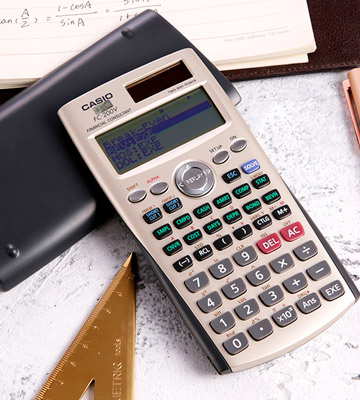
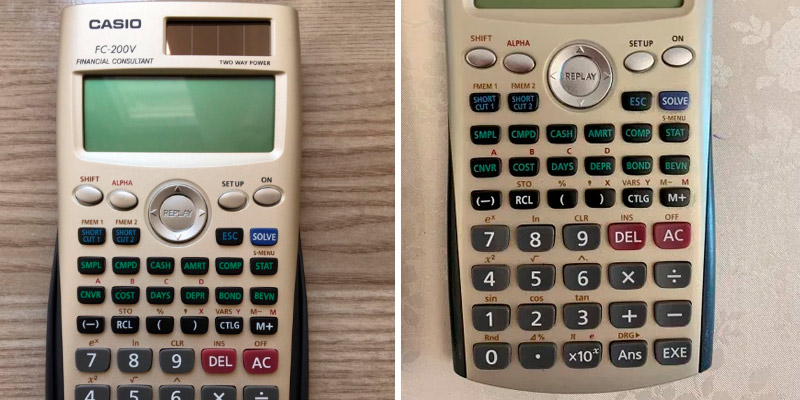

Your comment was successfully sent
Error! Please try again later